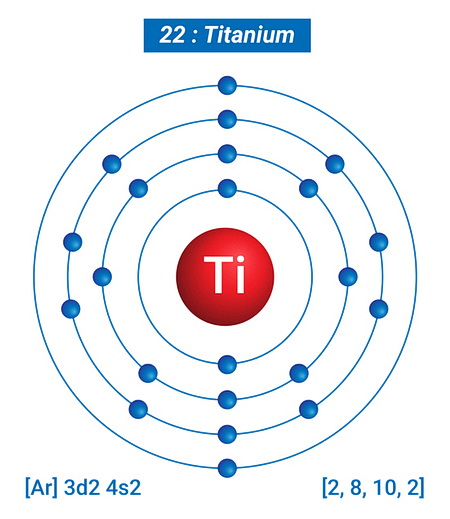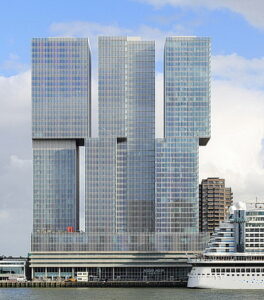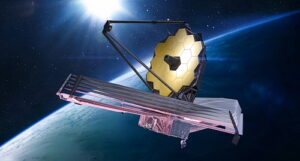
The Lockheed SR-71 Blackbird is one of history’s most iconic spy planes. Also known as the “Black Widow” for its unique appearance, this aircraft still stands as an impressive feat of aeronautical engineering. It holds many speed and altitude records that have yet to be broken, and there is much more than meets the eye with this plane…
The Origins of the SR-71

Before this immortal aircraft was developed, the United States relied on the famous U2 spycraft for its Cold War reconnaissance. On May 1, 1960, a U2 was spotted deep inside Russian territory, but the US was not concerned as they believed that this aircraft was impenetrable to Soviet air defenses due to its high-altitude flight. They were wrong.
A Soviet V-750 surface-to-air missile shot down the spy plane. The pilot, Francis Gary Powers, who took off from a secret US airbase in Pakistan, parachuted to the ground safely but was immediately captured by Soviet authorities and taken prisoner.
He was later released after a mutual prisoner swap between the United States and Russia; however, it was quite clear that something else had to be done if the US wanted (and needed) to continue its reconnaissance over Russia and other foreign lands without the concern of the aircraft being shot down.
Corona Spy Satellite

The United States began an ambitious project for U2’s successor. The Corona spy satellite program was one of the first. It proved amazingly successful in August of 1960 after it was able to photograph many parts of Soviet territory.
What’s even more amazing was that the pictures that the plane took were sent back to earth and successfully salvaged, resulting in an abundance of intelligence well needed as this cold war intensified. The Corona program ended in 1972.
A-12 Spy Plane

The CIA contracted Lockheed to develop a new plane that would surpass U2’s functionalities in every way. The Lockheed A-12 was born.
This prototype spawned some variants. The YF-12A Interceptor, which was designed to replace the F-106 Delta Dart Interceptor/ fighter, and the SR-71 Blackbird, was designed not as a fighter jet, but as a high-speed reconnaissance aircraft.
The YF-12A was built and tested but the Air Force decided to go for the F-111 fighter/bomber; however, the SR-71 was commissioned and 32 Blackbirds were eventually built.
The SR-71 was outfitted with all the advanced concepts from its A-12 parent, as well as the necessary devices (cameras and supporting equipment) for its intelligence mission to fly over foreign territory (namely the Soviet Union). This plane was able to fly much higher than the U2 and it flew four times faster. To this day, no aircraft has surpassed the speed of the SR-71 Blackbird.
Enter Skunk Works

This top-secret R&D group within Lockheed Corporation began during WWII to research advanced fighter aircraft, but its true meaning did not materialize until after the U2 was shot down.
As mentioned, it was evident that a more sophisticated aircraft that would be able to avoid Soviet planes and missiles, as well as being less vulnerable to radar signatures were required, or to put it another way, this new prototype had to be faster, higher, and stealthier than any other aircraft currently in existence at the time. The Skunk Works design team was tasked with creating this advanced aircraft.
Development of the SR-71

The design that Skunk Works had come up with was a radical break from conventional aircraft design. This plane would have a long, curved nose that would house a long-range camera and a shorter curved section behind that would house the pilot.
The idea behind this design was that it would significantly reduce the plane’s radar cross-section. Most of the aircraft’s volume would be behind the center of gravity, making the aircraft “lighter” from the perspective of radar. This would reduce the aircraft’s weight and make it fly even faster.
The plane would also be designed to minimize airflow, reducing drag and increasing speed. And all of this would be done with a plane that could carry almost 10,000 pounds of fuel and up to 10,000 pounds of payload.
Its futuristic profile made it difficult to detect on radar. Even the black paint used, full of radar-absorbing iron, helped hide its existence from the Russian radar defenses. Due to the plane’s unique design, some engineers viewed it as more of a spaceship than an aircraft.
The mineral titanium was one of the main reasons for the SR-71’s success. This metal is almost as strong as steel but lightweight enough not to allow the plane to fly and maneuver very well. Titanium is also able to withstand enormous temperatures when flying at 2,200 mph (3,540 kph).
And all this was done before digital functionality became commonplace.
Titanium and the Soviet Union

Even though titanium is the ninth most common element in the earth’s crust, its resources are lacking in the United States. And ironically, all the places where this mineral is abundant are in the Russian territories, so the United States created dummy companies to hide who was purchasing this needed mineral.
The result was that the US succeeded in importing titanium from right under the nose of the Soviets, and used it to build an aircraft that would eventually fly over their land and spy on them. How ironic!
Specifications of the SR-71 Blackbird
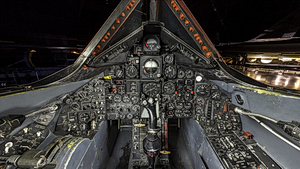
This aircraft was truly an extraordinary feat of engineering, and it had many specifications that would go on to set records and even become standards for future planes.
It had a crew of one and could fly at Mach 3.2 (2,455 MPH) at a height of 85,000 feet. That is almost halfway into the Earth’s stratosphere, and with a fuel capacity of 36,000 pounds, it could fly for over 2,500 miles without having to refuel.
Because it was designed to fly at very high altitudes, the SR-71 was pressurized, allowing the pilot to fly without a spacesuit. While flying at those altitudes, the plane would also be able to fly through weather that other aircraft could not fly in.
How Fast is the SR-71?
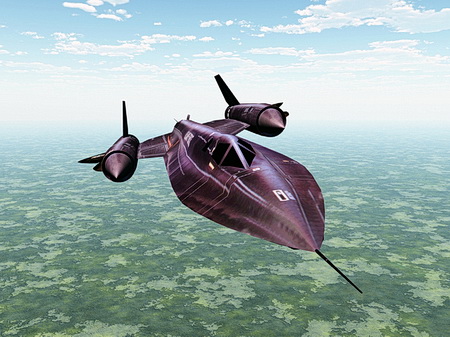
As mentioned this aircraft could fly at Mach 3.2. That’s faster than a bullet! Because the plane was streamlined, it was able to fly at those speeds without creating dangerously high pressures on the airframe. And this meant that the aircraft was able to maintain its altitude without using a lot of fuel to keep itself aloft.
This was a massive advantage for the SR-71, as it would let the aircraft fly for hours before needing to refuel. The speed record was set by retired Air Force colonel Bob Gilliland, who flew it from New York to London in 64 minutes, smashing the previous record. This equates to an average speed of 2,189 mph, which is still faster than any aircraft in service today.
Other Innovations by the Blackbird
As if breaking speed and altitude records weren’t impressive enough, the SR-71 also pioneered many other technologies that are still in use today. Here are some examples.
-
- The SR-71 used a special fuel to cool itself, which is now used in many modern engines.
- It had a special paint that didn’t reflect visible light or infrared light, making it incredibly stealthy.
- The plane’s cockpit was also extremely advanced, with a heads-up display that projected critical information directly onto the windshield.
- The navigation system was revolutionary, using Doppler beacons to accurately calculate the plane’s position.
- The plane’s way of communicating with ground control stations was unlike anything used before. It had a special method of transmitting information as bursts of radio waves that could be received by a single ground station at a time. This was necessary because the aircraft had no way of knowing which ground station it was closest to.
- The plane had a special method of using the airflow over the aircraft to cool its engines, which was necessary to prevent them from overheating at the plane’s high speeds.
Conclusion
The SR-71 Blackbird was one of the most advanced aircraft ever created. It pushed the boundaries of aeronautical engineering, and even in the modern digital age, it is still a very impressive machine.
This supersonic aeronautic advancement was extremely efficient and could travel long distances at supersonic speeds while carrying heavy payloads. It was also extremely stealthy, making it a difficult target to see and track.
Despite having been decommissioned in the 1990s, the SR-71 still holds impressive speed and altitude records. It truly is one of the most impressive aircraft ever created and deserves its place as a legend in aviation history.


